Written by Sasha Wirth and Photographed by Alycia Lang
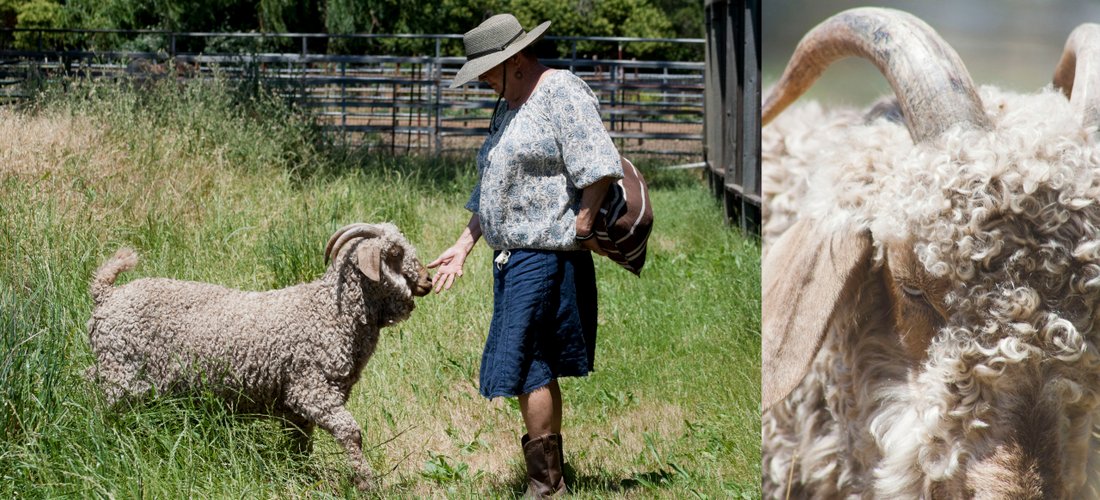
In another neighborhood, it might have been a loaf of banana bread or a plate of cookies. But when Nancy Thompson’s neighbor paid her a visit, she came with a baby goat in a box.
“His mother had died giving birth, and she asked if I wanted to help and take him in. I said yes right away. My granddaughter helped me bottle-feed him every three to four hours. It was quite a commitment, but Jack quickly became part of the family.”
Two years later, another neighbor brought an orphaned goat to her door, and Jack received his first companion – a Boer goat named Sister May.
“From the very beginning, this has been a learning experience,” says Nancy. “Both with raising goats and buying this property. The land we purchased was previously used as a dumpsite, and we’ve been working hard to restore the ecosystem here. Having Jack and Sister May opened up the vision we had for the place.”
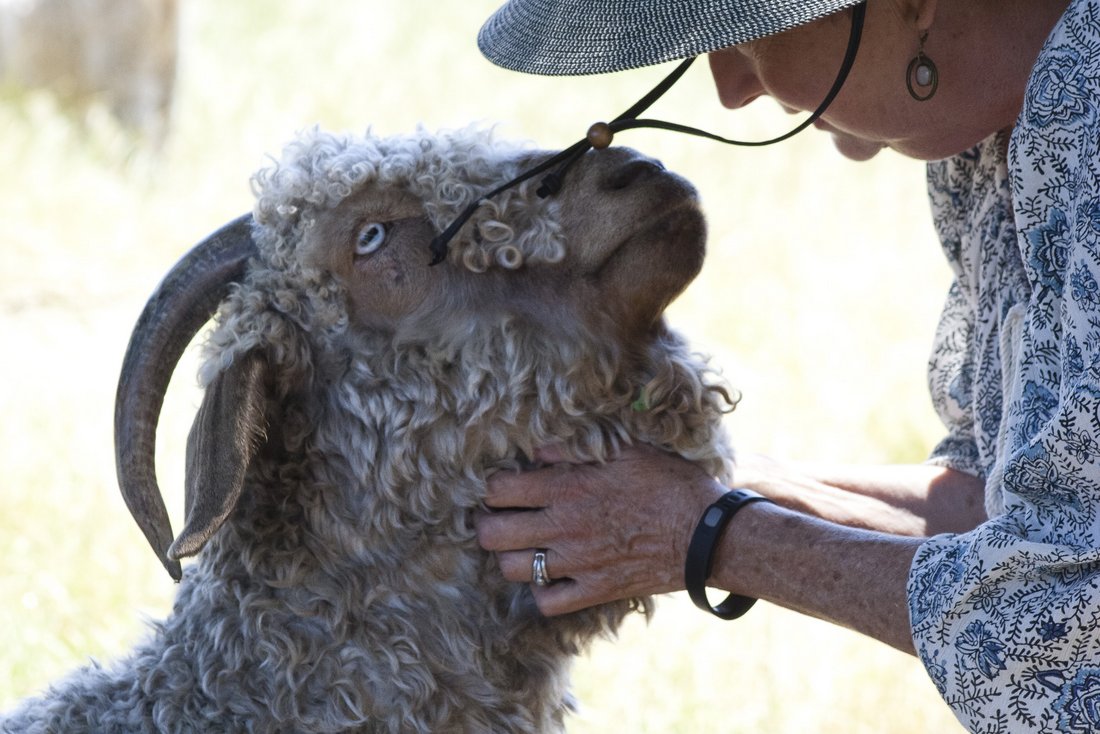
Nancy and her husband began to discuss how goats could play a larger role on their two-and-a-half acre property in Solano County. They decided they did not want goats for milk or meat, but rather for their mohair fiber. They began to ask around and came across an older Angora doe named Marguerite and her two kids, Leonardo and Francisco. Not wanting to split up the family, Thompson declared:
“I’ll take all three.”
And when a close friend called and said she found two young female goats who needed a special place to call home, the gates of the Thompson’s homestead were opened wide.
“Lily and Pearl were the runts of a big herd. They were being picked on and hurt. Poor Pearl’s hooves were deformed. How could I not take them in?”
Thus the Thompson land became a sanctuary for rescued Angora goats.
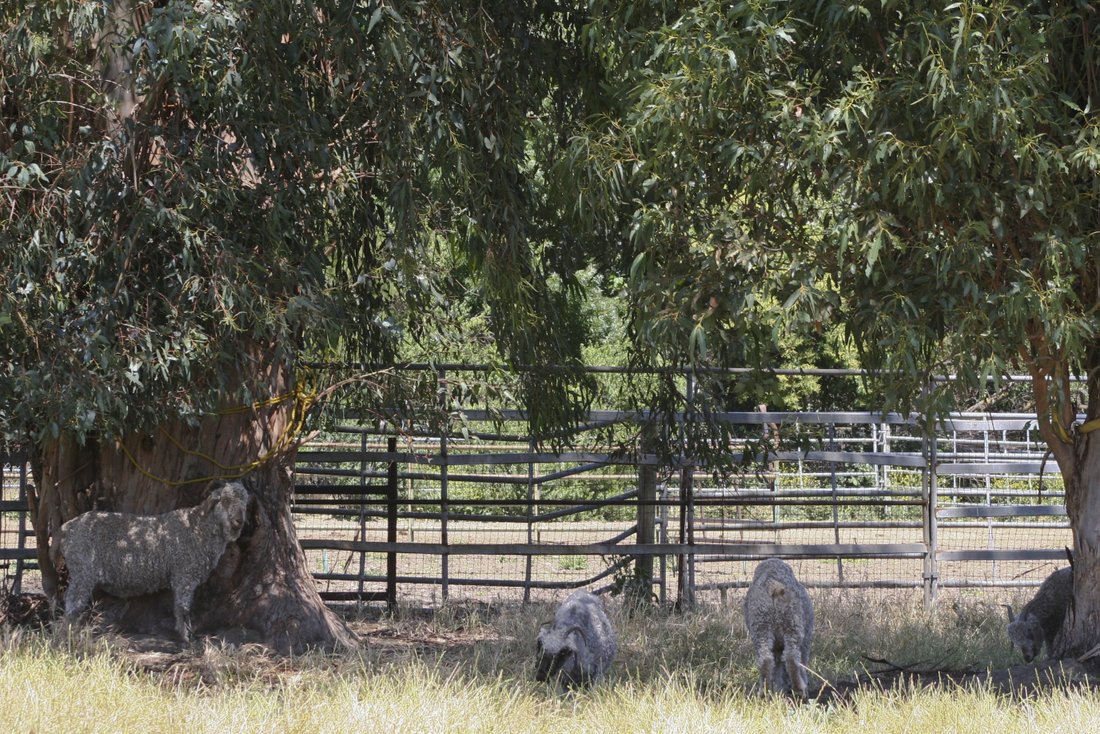
“They’re like children. Each is special in his or her own way,” she explains. “Wonderful. Friendly. Humorous. And they’re full of personality! Francisco doesn’t allow the other goats to be near me. He’s established his own form of hierarchy. I have to find quality time for the others when he’s not around.”
The life of animal husbandry, however, does have its challenges. Jack passed away after eating chicken food, and Leonardo died from internal complications after a procedure.
“It’s all part of a learning curve, but it’s still difficult,” she sighs, able to recall the exact dates of their passing.
Yet the remaining five goats have provided Nancy with plenty of work and the opportunity to discover the unique characteristics of mohair, inspiring the creation of her small business Tolenas Mohair.
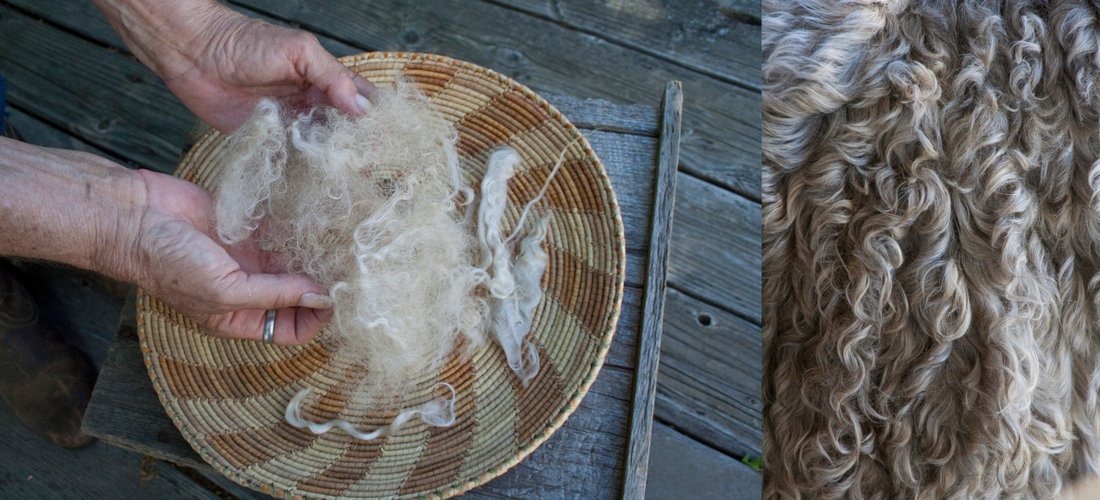
“The range of texture and color in mohair is incredible,” she says. “Marguerite’s mohair is a very fine, glistening silver black. It’s ideal for lace and accent work for weavers, like curls on a lapel for added dimension. Whereas Francisco has curly beige hair that is soft and takes on natural dye well. We made a solar dye with cactus flowers and it came out a gorgeous lilac. ”
With her tawny curls, Lily is essentially a miniature version of Francisco, though her small size doesn’t keep her from pulling her [mohair] weight. “She produces as much as him,” Nancy laughs.
And Pearl, true to her name, has strands of glistening white mohair.
“Her fiber is dense, but still very soft. The curls are tight and this brilliant snowy shade. They’re perfect for accent work and to blend with wool.”
With the exception of Sister May, who doesn’t produce mohair, Thompson produces around 30 pounds of fiber every six months. Well-known shearer John Sanchez stops by to do the work, and Nancy is left with fiber to wash and experiment with.
A knitter and crocheter since her high school days, she’s begun taking drop spindle lessons to better understand the texture and properties of her fiber. She’s also had her mohair analyzed for micron count.
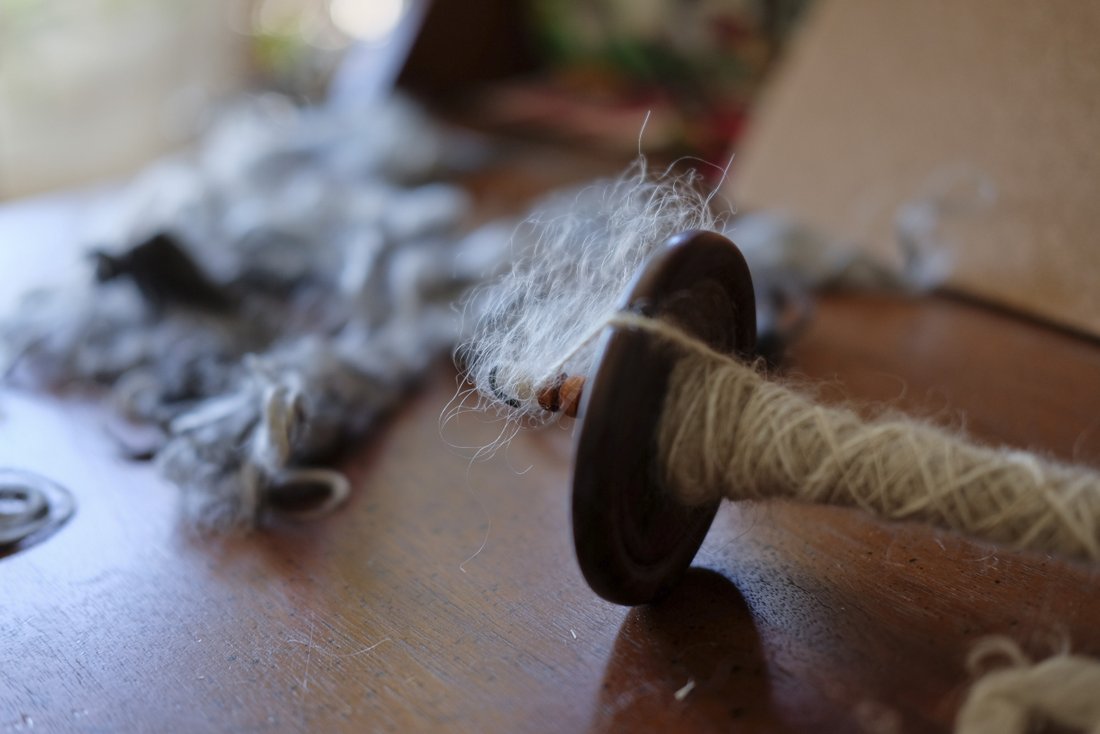
“There is so much to learn!” she exclaims. “I feel like I’m just starting out. I’m observing what works and what doesn’t. I want to be able to create the best mohair product for fiber artisans and craft makers alike.”
However, you won’t find her spending too much time inside with her needles or spindle. She’s more likely to be found reclining in a hammock surrounded by her beloved goats.
“I love being outside,” she declares. “During the summer my husband encourages me to go inside during the hot part of the day and spin. I look at him and say ‘Hmmm, maybe!’ and head right out.”

Being with her goats and ensuring the land is thriving are very important to Nancy. Given her previous work in the Forest Service for 35 years, she understands the value of holistically managing an ecosystem.
“The land and goats work together. It’s a symbiotic relationship. Healthy land produces good nutrition for the goats, who then produce quality mohair. The goats, in turn, graze the land and clear it of weeds.”
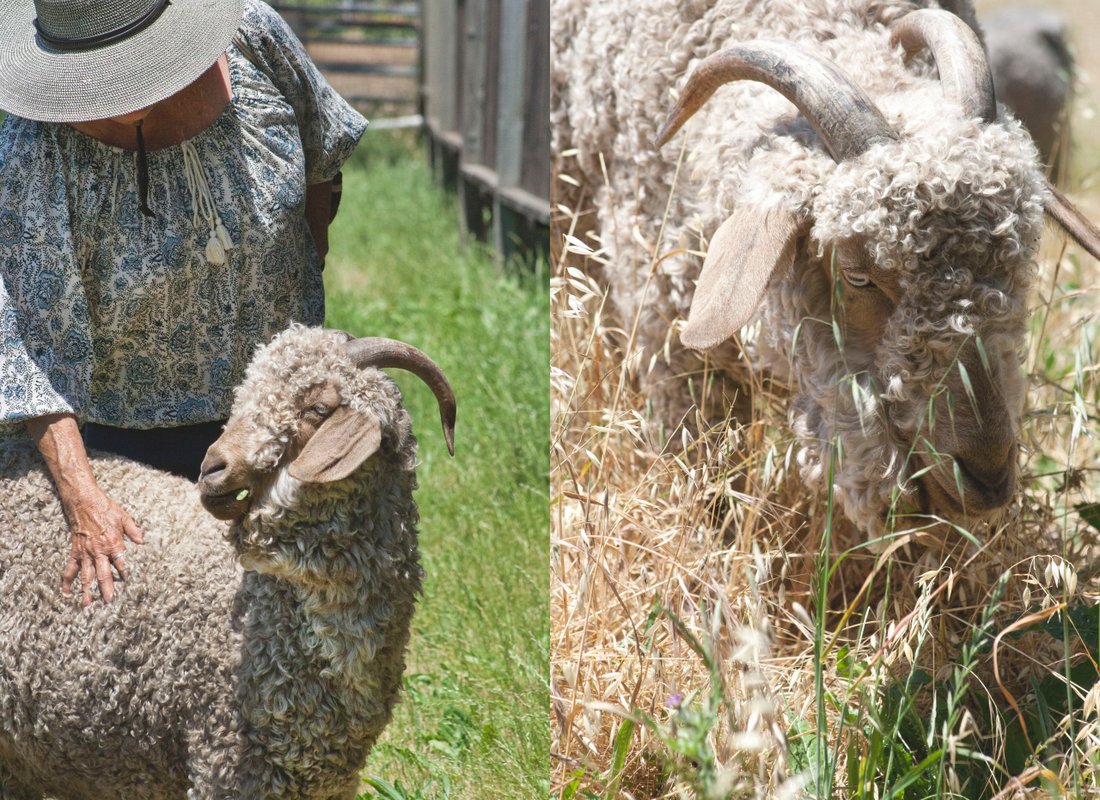
In the 1800s, long before it was a dumpsite, the property had been a productive ranch. Aiming to bring it back to its glory days in a sustainable way, Nancy and her husband have slowly started putting a Carbon Farm Plan in place by working to have vernal pools reappear during spring, planting native type grasses, and not doing any tilling or mowing that might disrupt the healing of the ecosystem. The goats graze in a rotational system that involves evaluating the healthy life cycle of the grasses.
“We’re being light on the land. Learning as the environment presents itself. We don’t believe in being radical. In the short time we’ve been on this property, simply putting an efficient irrigation system in place and replenishing the land with nutrients has made a sizable difference in the carbon balance of the land.” The redwood trees on the property also serve as a sustainable food source for the goats, giving them the wood fiber they require. All of these decisions offset potential greenhouse gases that might have otherwise been produced, and ensure Tolenas Mohair leaves a positive impact on the environment.
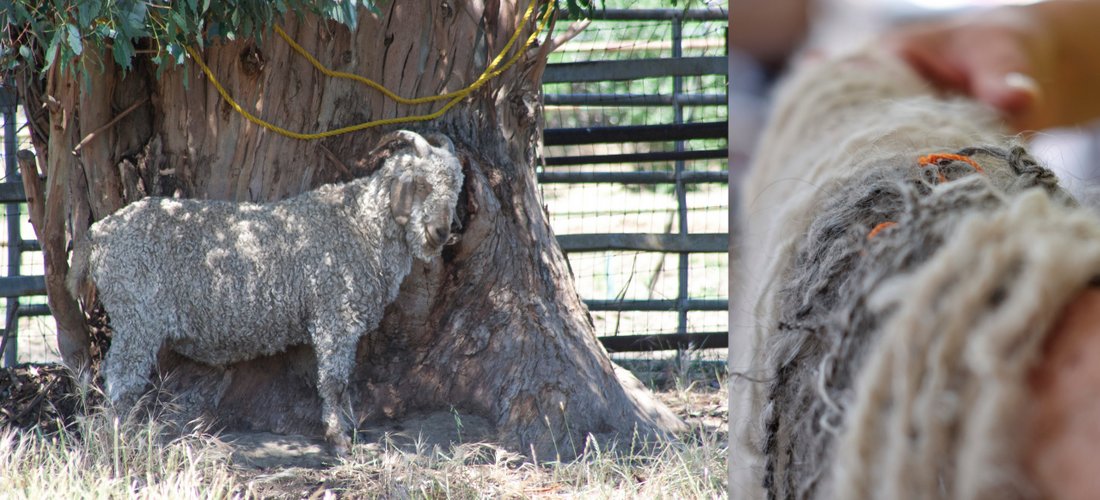
Nancy estimates that on the quarter acre that has been their main focus, the various carbon sequestration efforts have already saved around 9,000 gallons of oil per year (as per soil testing analysis through the UC Davis Gaudin Lab). They’ve also attracted local wildlife, such as monarch butterflies and egrets, back to the land. Next up is expanding the Carbon Farm Plan to the rest of the property and being a part of Solano County’s environmental standards.
“I’ve found my niche. My direction,” she says contentedly. “Taking care of the land and being attentive to the schedule of my goats.”
When asked if she plans to expand her herd, Thompson mentions that five goats – along with her daughters’ chickens – are enough for the land and her entrepreneurial efforts at the moment.
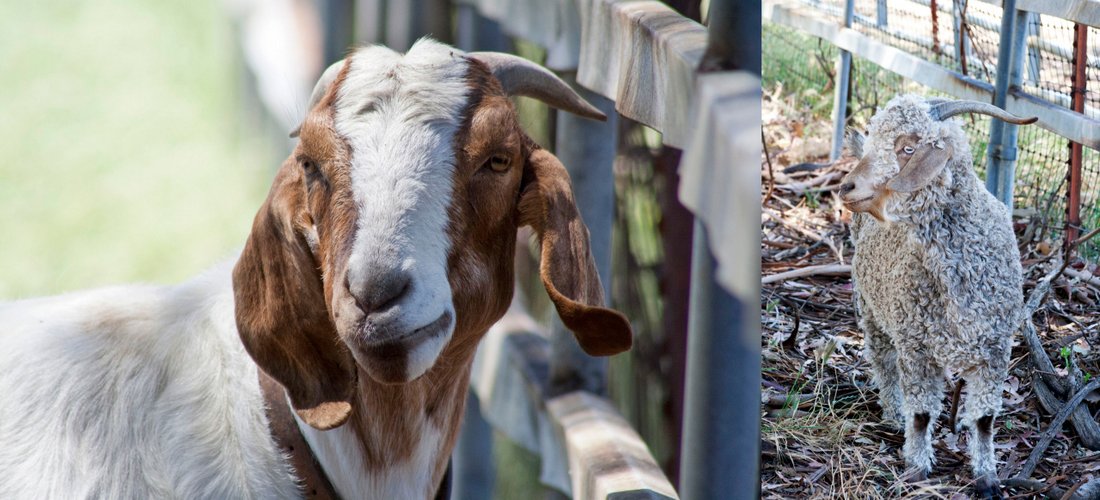
“We’re mindful about every action we take,” she says. “Though I’m always open to exploring possibilities.”
Especially if there’s another neighborly knock at her door.
To learn more about Tolenas Mohair, visit their website at www.tolenasmohairfarm.com
